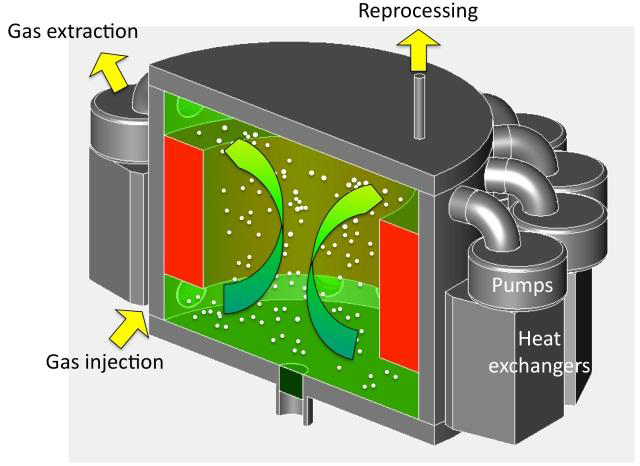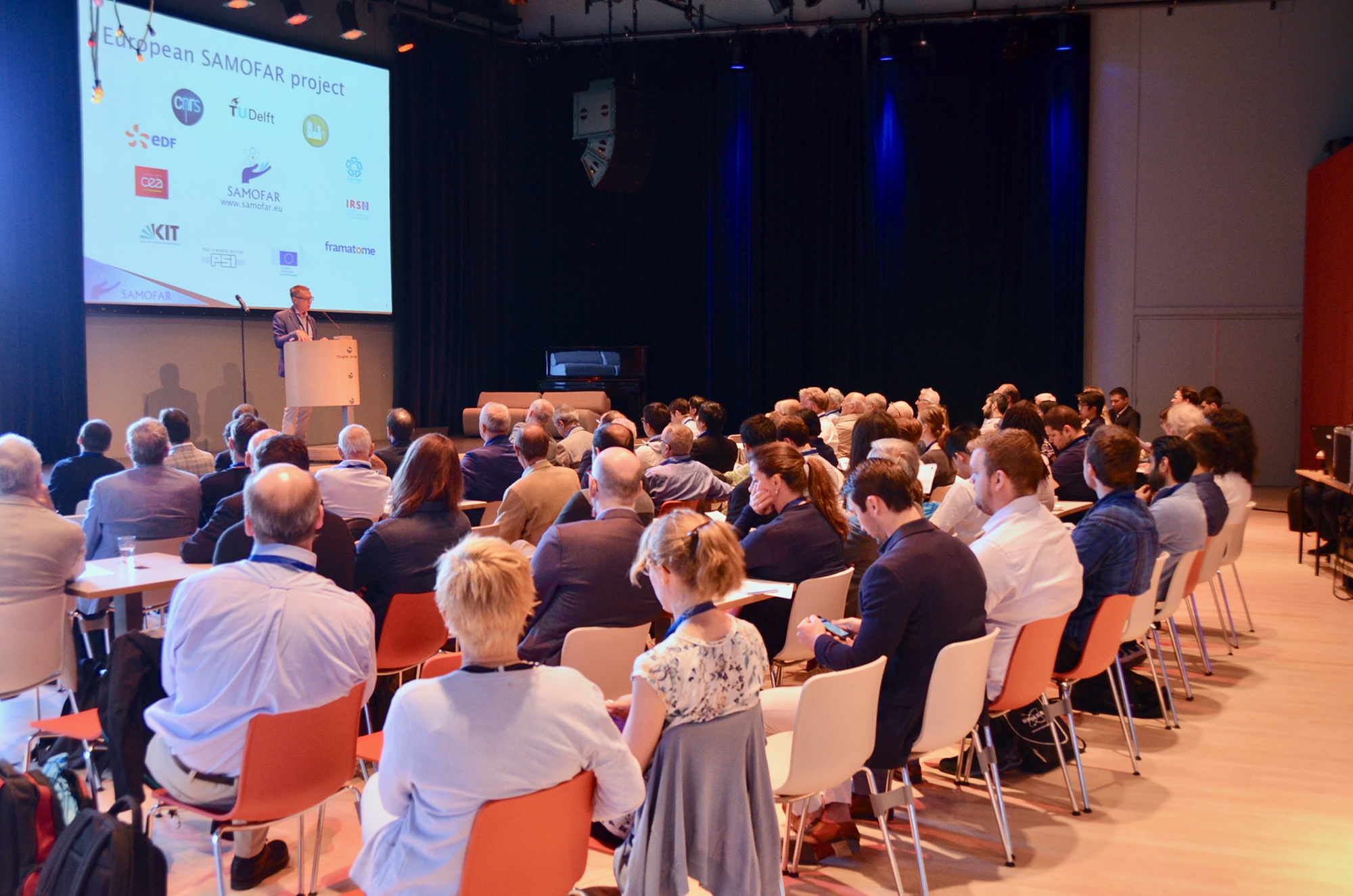Experts on thorium reactors convened in Delft after a four year programme: the molten salt reactor could make nuclear energy both safe and sustainable.
Nuclear energy in Europe is in a state of limbo. Germany has announced the closure of its nuclear plants and will burn coal instead; France strongly relies on reactors that are more than half a century old. And the storage problem of radioactive nuclear waste is forwarded to future generations. So when will European politics acknowledge the need for serious new investments in nuclear energy?
Samofar, the acronym for the European research programme, stands for Safety Assessment of Molten Fast Reactor. This new type of nuclear reactor is not only inherently safe, it could also deliver a breakthrough in nuclear waste management and make nuclear energy both safe and sustainable.
Samofar is a major Euratom research project and part of the European Horizon 2020 programme. The consortium includes 11 institutions, among which seven research institutes with TU Delft in the lead. TU Delft is regarded as a centre of expertise in fundamental experimental thermal-hydraulics and computational reactor physics.
The research project, which started in 2015, was concluded with a festive meeting in Delft city centre on 4-5 July 2019. Work package teams presented their main results and international speakers presented an update on the future of molten salt reactors. Professor Jan Leen Kloosterman coordinated the meeting and has put the presentations and video recordings online.
Work continues after the Samofar closure, explains Dr Danny Lathouwers, who attended the meeting in his capacity as leader of the Accident Analysis work package. Before Samofar, there was the EVOL programme (2010-2013), which studied the viability of liquid fuel fast reactors. And research will continue under the Samosafer project (2019-2023), which focuses on new safety barriers and controlled behaviour in severe accidents.


The Molten Salt Fast Reactor (MSFR) is at the heart of the programme. It is a strongly modified version of the molten salt reactor that ran for thousands of hours in the Oak Ridge Laboratories in the 1960s.
Benefits
In the French design, the core of the modernised reactor is a cylinder, over two metres high and wide, which contains molten salt and U-233 as a nuclear fuel. The heat from the core (at about 750 degrees Celsius) will be transported through heat exchangers to steam turbines.
One of the benefits of the CNRS design over the current fleet of light water reactors is that the core works at ambient pressure, which means no risk of explosion. Another important bonus is its suitability for other nuclear fuels. MSFRs may be used to ‘burn’ existing nuclear waste. Most of the MSFRs’ waste can be released within 10 years and about 17% must be stored for 300 years. Compare that to the geological storage sites required for the nuclear waste of today’s uranium reactors.
‘Thorium reactor’ is a popular name for a certain type of MSFR. Thorium itself is abundant, but is not directly suitable for nuclear fission. Under neutron irradiation, thorium atoms (Th-232) may capture a neutron and decay over two steps into the artificial isotope U-233, which can be used as nuclear fuel. The red zones in the reactor core (see illustration) are reserved for radiating thorium to produce U-233. This process is also called ‘breeding’.
Prototype
Kloosterman has produced a short video explaining the concept of the thorium reactor and its many advantages (see below). He argues that by 2050, nuclear energy will have to generate about 10% of energy production “if we want to keep climate change somewhat under control”. The question is then: do we continue to operate uranium reactors, or will we prefer thorium reactors?
“So far we’ve mainly been developing theory, running experiments and simulations,” says Dr Lathouwers. All studies indicate a perfectly controllable form of energy that could power society for thousands of years. “It’s time to move in the direction of engineering and produce a prototype.”
Meanwhile China has announced that it will invest the equivalent of EUR 3 billion on two experimental thorium reactors in the Gobi Desert.
European research programmes are about one thousands part of that with a typical budget of EUR 3.5-4.5 million.
A nuclear renaissance is way overdue. A wake-up call from China, or shortfalls in the planned CO2 emission reductions may help make European energy policy more realistic. Ironically, new nuclear energy starts with a working demo of the reactor type we had more than half a century ago.
Jan Leen Kloosterman on the principles and promises of the thorium reactor.
Do you have a question or comment about this article?
j.w.wassink@tudelft.nl


Comments are closed.